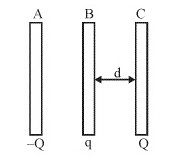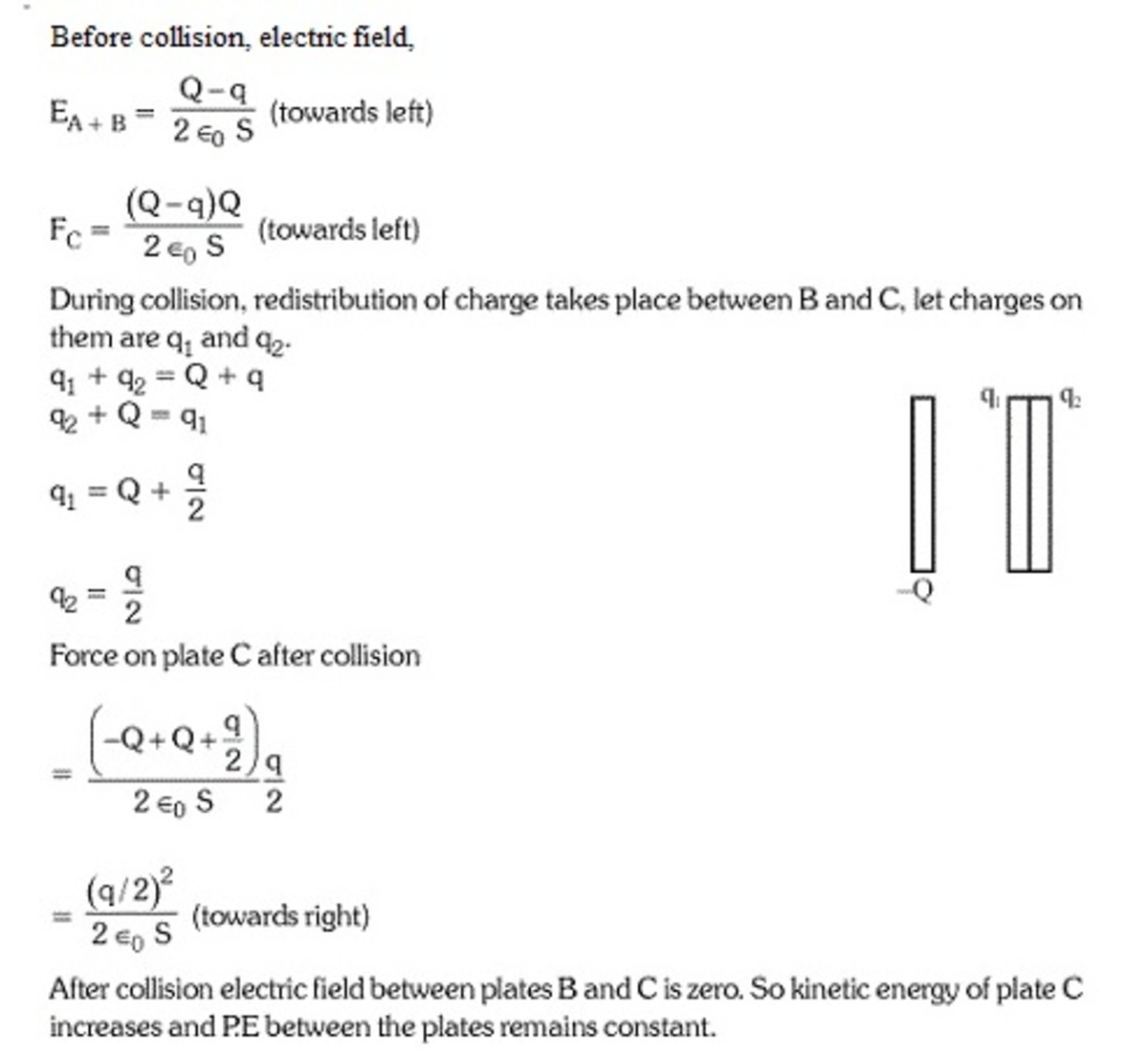Capacitor collision

Two fixed very large conducting plates and of area carry charges and respectively, where . A third identical plate carrying a charge is released at distance from . Third plate collides with . Assume collision is elastic and time of collision is sufficient to redistribute charge among and (neglect gravity):
A: Force acting on plate before collision is .
B: Force acting on plate after collision is .
C: Subsequent to collision kinetic energy of plate increases.
D: Subsequent to collision electrostatic potential energy between the plates remains constant.
This section requires Javascript.
You are seeing this because something didn't load right. We suggest you, (a) try
refreshing the page, (b) enabling javascript if it is disabled on your browser and,
finally, (c)
loading the
non-javascript version of this page
. We're sorry about the hassle.
